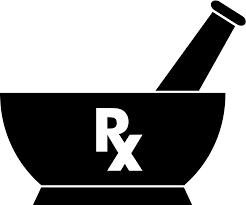|
Sometimes it is helpful to combine different treatments to achieve a better result, either at the same visit or subsequently. It stands to reason that when one has an injury more than one structure may be affected- muscles, fascia, ligaments, tendons etc. What is not as well known is that cutaneous nerves become sensitized and may perpetuate pain through the release of specific chemicals (such as CGRP). Different structures require different approaches.
We may have already treated myofascial pain with the pain neutralization technique (PNT) or trigger point injections but the patient may have some residual symptoms. We often combine perineural injections with prolotherapy or may combine prolotherapy with PRP. Sometimes we use acupuncture or acupressure to calm symptoms of anxiety or light-headedness if a person is apprehensive. PNT can substantially reduce the number of trigger point injections needed. One example: A lady was referred for acupuncture for treatment of longstanding shoulder and upper back pain which was interfering with her work. She was very keen to have this fixed but was so apprehensive about the needles that she broke out in a sweat (quite unnecessarily) before she could be examined. Instead of tackling the painful area directly she was initially asked to lie down on the exam table and four thin sterile acupuncture needles were gently inserted into peripheral points in her hands and feet which are known to have pain-modifying effects and which moderate the "fight and flight" response. After resting quietly for 20 minutes she was feeling much better (people often find acupuncture and acupressure quite relaxing or soporific). Then all but one of the tender points in her shoulder, arm and upper back were released with PNT using finger pressure only (no needles needed!). Only one resistant point on the side of her upper arm was still tender (what the Chinese would call an ah shi point); this was treated with an acupuncture needle briefly. When seen in follow-up she remained pain-free and able to work without discomfort. Another example: A lady was seen for chronic pain in her neck, shoulders, back, thigh and hip which had persisted following a motor vehicle collision. Her X-rays were normal; all her pain was "soft-tissue" but her function was limited. At the initial visit she was found to have very limited range of movement of her one shoulder with multiple tender points around the neck, shoulder and upper back. She also had limited movement of her lower back and one hip because of pain. PNT released her shoulder and neck pain the first visit and she regained full range of movement within a few minutes. On a few subsequent visits some recurrent tender points were released. PNT also released painful areas in her abdominal muscles which can cause referred pain to the back. Her back muscles and thigh needed trigger point injections and some of her hip pain responded to perineural injections. Obviously, these methods will not correct major structural abnormalities but because pain reduces function by inhibiting muscle movement, when the pain is relieved function is often restored. Comments are closed.
|
AuthorDavid is a fan of books and no doubt will be sharing some good reads here. Archives
February 2024
Categories
All
|

 RSS Feed
RSS Feed